The choice of species influences the floor colour
There are many timber species used in timber floors, which provide us with a rich array of colours and grain patterns. In some species the natural colours will be fairly consistent while in others there can be blend of many colours and tones.
This is particularly so where the sapwood (outer layer of timber beneath the bark) is often much lighter in colour than the heartwood. Even within a single species and within individual trees, large colour variations of the heartwood can occur. In addition to this the age of the tree also has a significant effect on the colour. Timber from younger trees often being lighter in colour than more mature trees. When choosing a timber species ensure that you consider the following:
- Are you looking for a timber species or a timber colour? If you are more concerned with colour, then ensure that you are accepting of the colour variations that may occur in that species. You may also consider whether there is another similar coloured species or whether mixed species of similar colour are available that would be more suited to what you are looking for.
- You need to realise that photos in magazines or off computer screens are NOT going to give you a realistic representation of species colour. Even a sample flooring board provides just one representation of the colour in that species. Due to this, larger panels in showrooms should be viewed and even these cannot cover the full range of colour variations.
- If you like the colours in a species from one supplier, should you expect that the colours in that species will be the same from another supplier? No, there is no assurance that this will be the case due to differences in growing region and tree age. It is important when choosing a timber floor to remember that no matter how large the showroom sample is that you have seen, it is only indicative of the species colour and natural variation that may be expected. Your floor will be different from these samples and totally unique to you in its beauty.
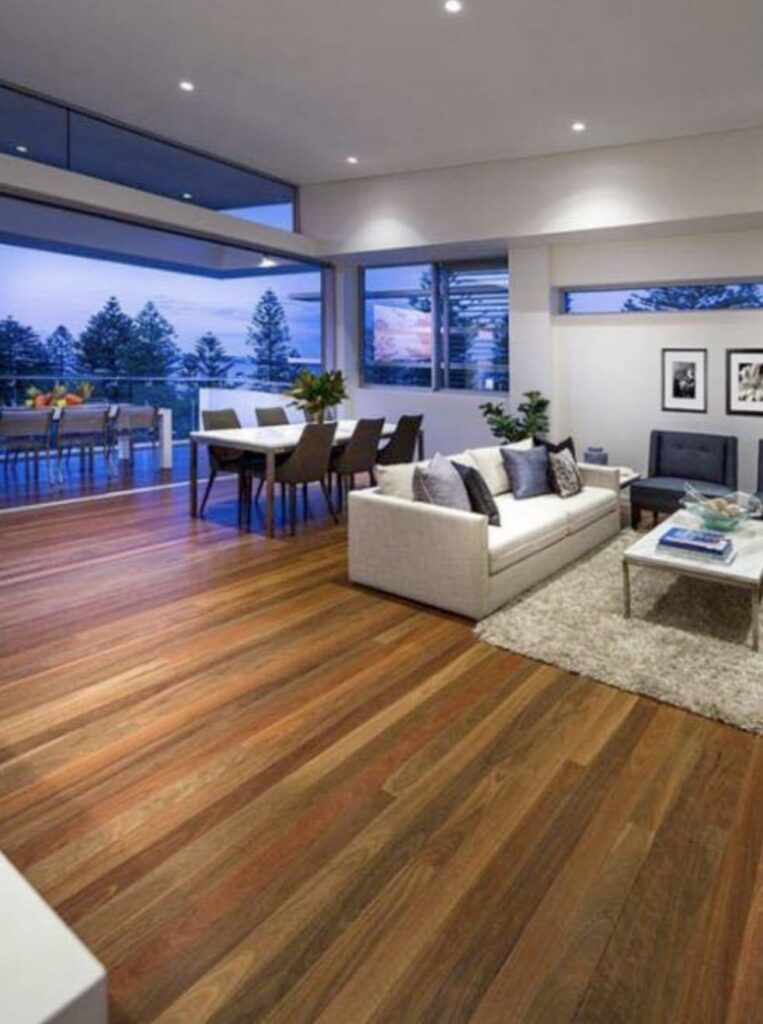
Queensland Spotted Gum with an oil based finish.
Common flooring species
Provided below are some common flooring species from Australia and New Zealand, grouped by
growing location and colour tones.
NSW and Queensland species
Lighter tones
Coastal species
Blackbutt
Silvertop Stringybark
White Mahogany – White Stringybark
Tallowwood
Highland NSW species
Manna Gum – New England Oak and
Ribbon Gum
New England Blackbutt
Inland
Cypress

NSW and Queensland species
Brown/red tones
More consistent colour
Coastal species
Brushbox
Turpentine
Grey Box
Grey Gum
More mixed colours
Coastal and inland species
Spotted Gum
Grey Ironbark
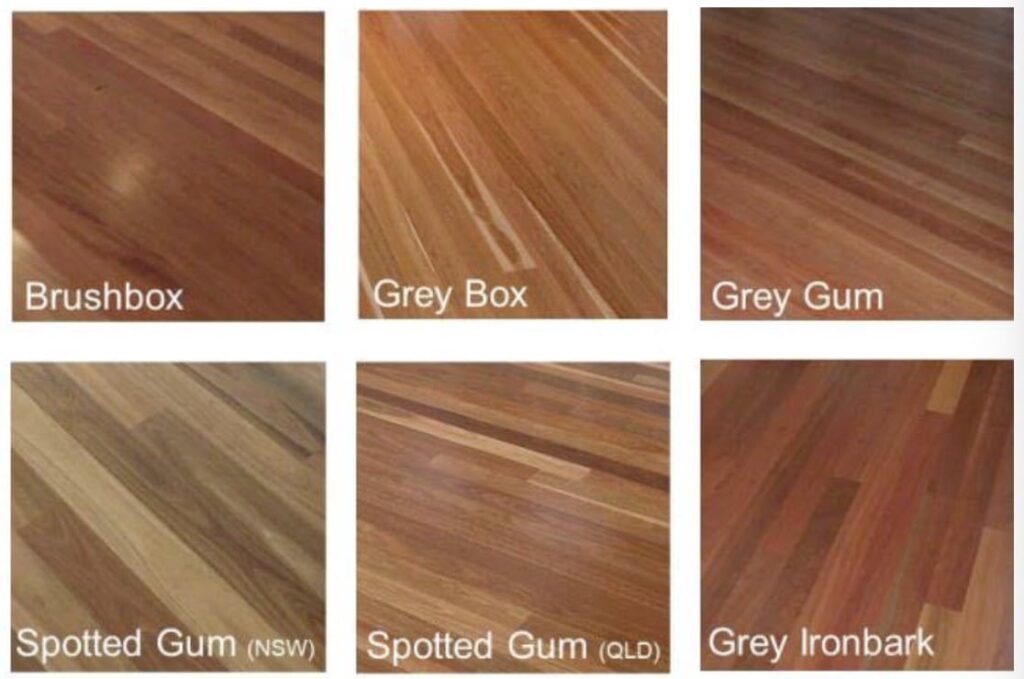
Victorian and Tasmanian species
Species mixes
Tasmanian Oak
– Alpine Ash, Mountain Ash, Messmate
Victorian Ash
– Alpine Ash, Mountain Ash
Wormy Chestnut
– Brown Barrel, Silvertop Ash, Messmate
Lighter toned timbers
Yellow Stringybark
Shining Gum
Manna Gum
Other species
River Red Gum
Tasmanian Blackwood
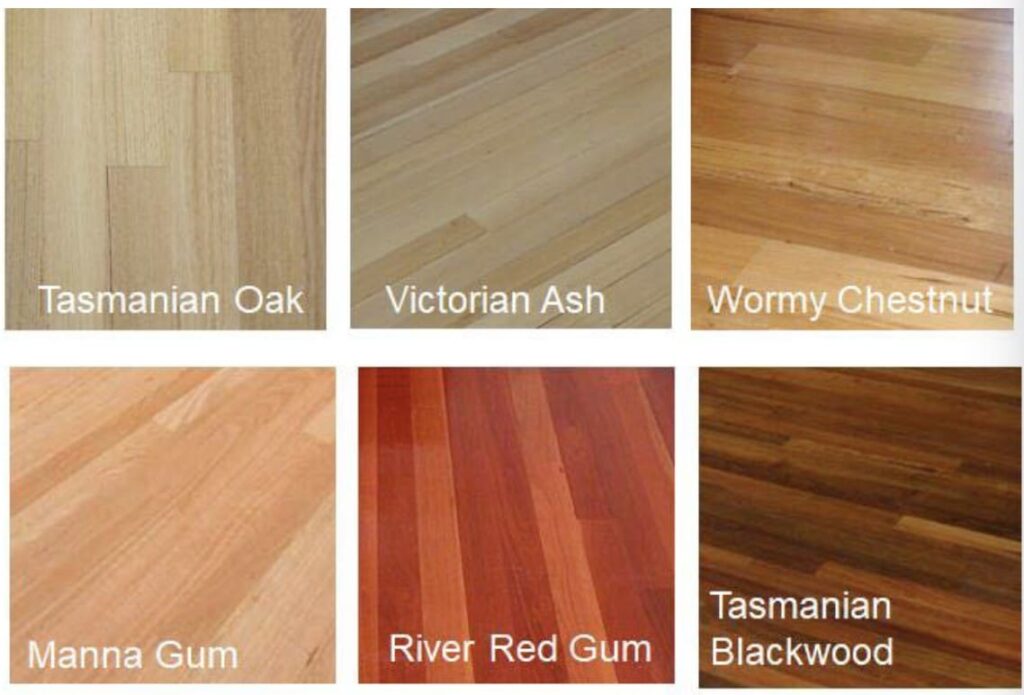
New Zealand species
Deep red timbers
Rimu
Matai
Tawa
Kauri
Totara
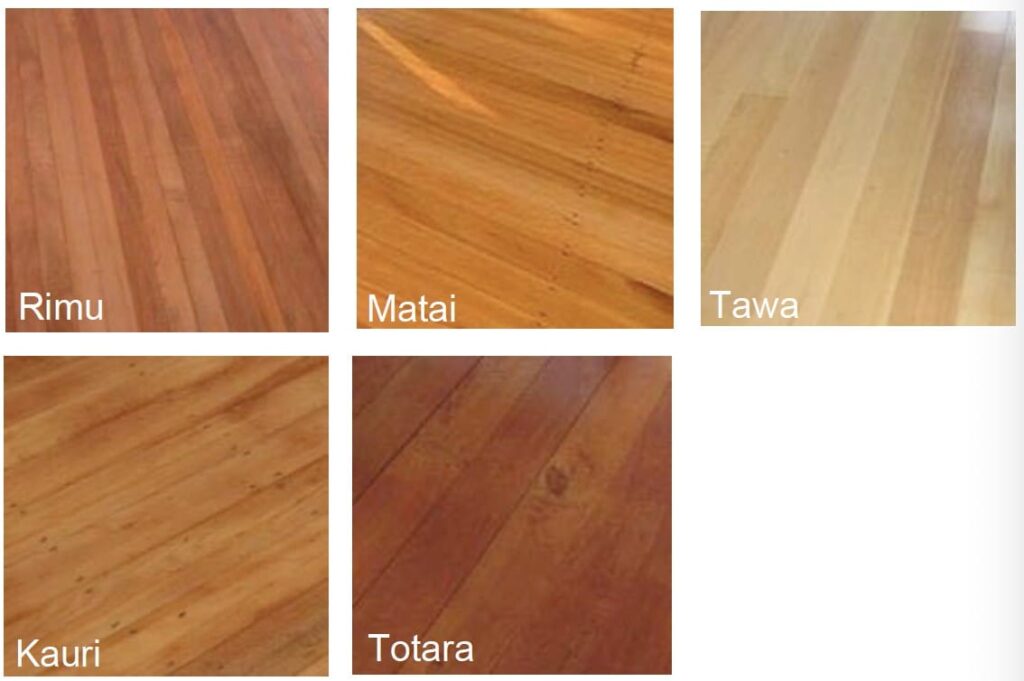
Note that the above can only be considered as general representations and specific only to those
floors as shown. Light, coating type, photography effects and many other factors influence the actual
appearance of a floor.
The choice of grade influences the character of a floor
It is important to realise that grading rules do not cover either colour or colour variation, but do
significantly influence the appearance, with some grades including more of the character of the tree’s
history with larger gum veins, knots and other features present. In other grades the cleaner natural
lines and figure of the timber will dominate with fewer and smaller features present. When deciding on a timber grade ensure that you consider the following:
- All trees contain features such as gum veins, knots and past borer activity, and for many such features add to the character and charm of their floor. Therefore, when choosing a grade, you are simply deciding how much feature that you desire.
- The grade has no influence on a floor’s fitness for purpose in terms of its manufactured moisture content range or machining tolerance etc. These aspects are the same for each grade.
- All grades permit some feature and even though it may be named ‘Select Grade’ some gum veins, knots and past borer activity is permitted.
- There are grade names associated with Australian Standards grading rules and in other instances flooring manufacturers may have their own grades and grade names. A manufacturer’s grade will not be exactly the same as that in an Australian Standard and at times can be a blend of two grades.
- How the boards are mixed into the floor both in terms of colour and feature is up to the installer, so if you have any specific view on this, you should discuss it with your installer.
Also of importance is that different features can predominate in different species. Therefore, two
floors of the same grade may appear quite different in terms of the predominating feature and how
dominant that feature appears in a floor.
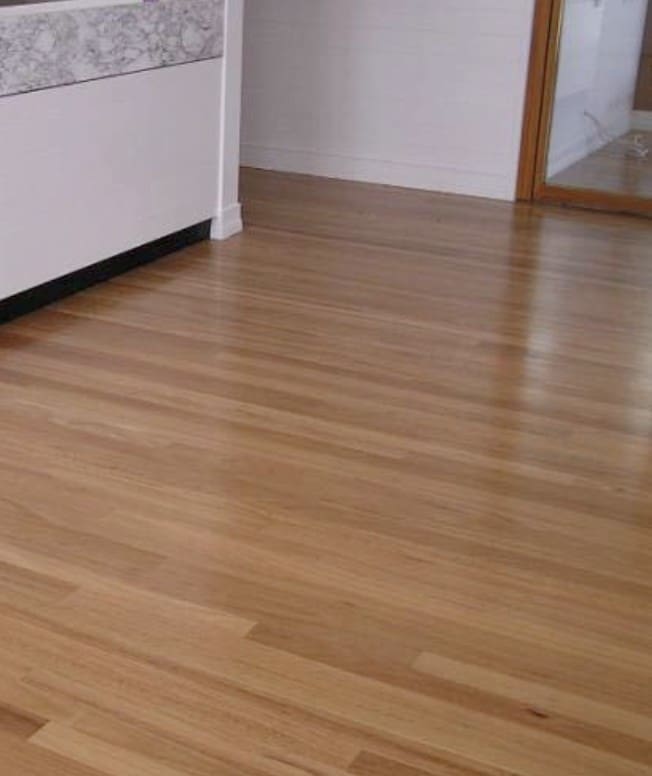
Lightly featured
AS 2796 Select Grade
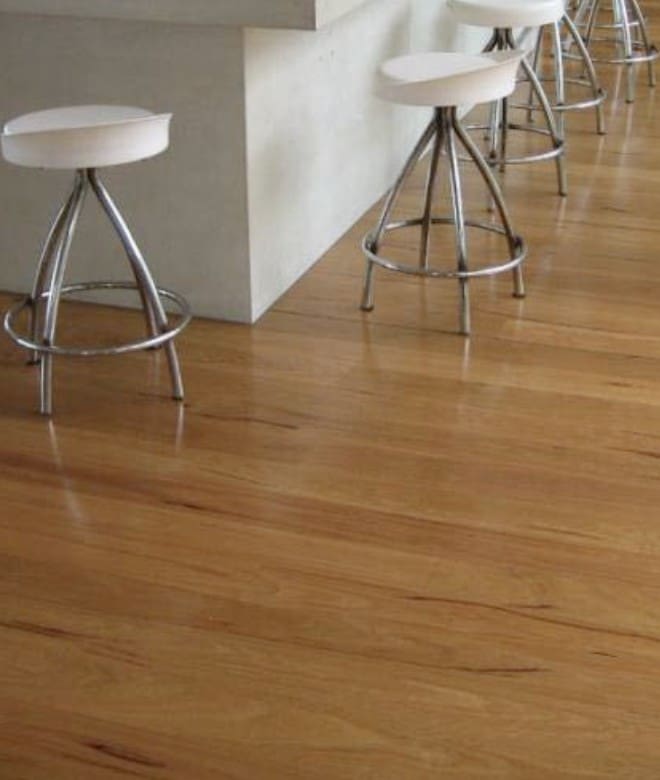
Moderately featured
Medium Feature – Standard Grade

Highly featured
High Feature Grade
